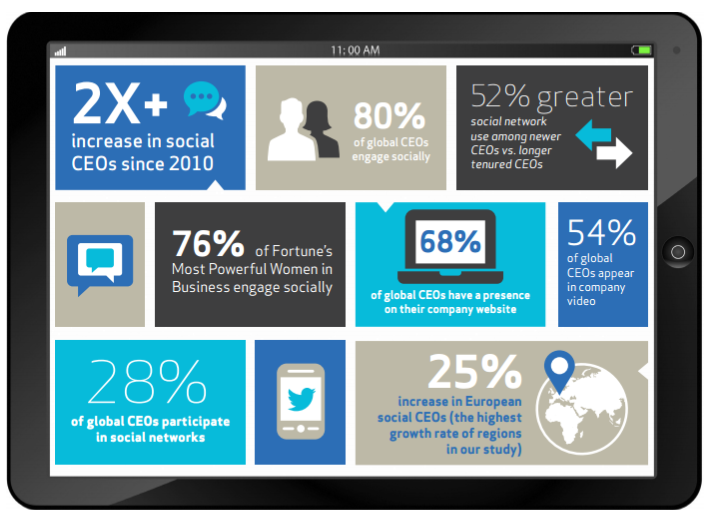Few things have the power to be both the potential joy and bane of a CEO’s existence like social media. As we’ve seen, a single tweet can cause share prices to plummet, while a genuinely empathetic YouTube apology has become a strategic element of saving face in the midst of a PR nightmare. With nearly two billion users worldwide, social media has become an invaluable – and inescapable – corporate tool for everything from brand building and customer acquisition to crisis management. The question remains, however, whether it is the top executives of companies who should be the mouthpiece of their company on social media.
A recent study found only ten percent of CEOs at the top 50 Fortune Global 500 companies tweet, and not one of them is active on Facebook. To understand why it is that senior executives – at least for now – tend to deem the risks of participating in social media greater than the potential rewards, we spoke to Eden Yin, Senior Lecturer in Marketing at the University of Cambridge Judge Business School.

Four reasons executives avoid social media
Reflecting on the participants in the social media program he teaches, Yin identified four common reasons why senior executives might avoid social media:
- Feeling unprepared: Social media channels are a platform for dialogue. Chief executives may not have skills needed to have a genuine dialogue with their customers.
- Time commitment: Unlike email, social is very fast-moving. People expect an instant response, and any delay can be interpreted as a personal offense.
- Complexity of the media landscape: From Facebook and Twitter to YouTube and beyond, it’s challenging to know how to send the right message via the right social channel.
- Social media isn’t in the business DNA of CEOs yet: Sure, media moguls like Virgin Group’s Richard Branson or tech magnate like Salesforce’s Marc Benioff are social savvy. But many 50-and-older C-suiters have yet to adapt to these channels that are second nature to younger generations.
From Austin Powers to James Bond, here are my superspy credentials https://t.co/TFhtj66C3D pic.twitter.com/HQRT2dfapi
— Richard Branson (@richardbranson) January 28, 2016
Despite the challenges, Yin foresees growth in the number of senior executives establishing a personal presence on social media. “There’s a shift underway that calls for a new kind of corporate culture and business model – a transformation of business as a whole,” says Yin. “Building a strong brand means creating strong emotions. There’s no better medium than social for creating a meaningful and emotional bond, because it’s so intimate.”
Three tips for executives joining the social media conversation
- Take a moment to listen before you join the conversation.What are people saying about your company? How are they saying it? Because people communicate more openly on social media than they would in a market research survey, this is a great opportunity for you to gain insight into the genuine need and preferences of your customers and stakeholders.
- Choose your platform carefully. What do you want to achieve? What kind of engagement are you looking for? For instance, as Yin explains, “Facebook and LinkedIn are more social than media – they’re about developing relationships and keeping in touch. Twitter and YouTube are more media than social – they’re more about broadcasting messages.”
- Do it right – or don’t do it at all. Just because it’s free to post on social media doesn’t mean that it’s cheap and easy to do properly. Without 100 percent efforts, customers be prone to frustration in response to lack of responsiveness or turned off if they sense inauthenticity.
(From The Economist; Executive Education Navigator)
—
Laura Montgomery is a higher-education expert who blogs for The Economist Careers Network.
Main image credit: webershandwick.com



